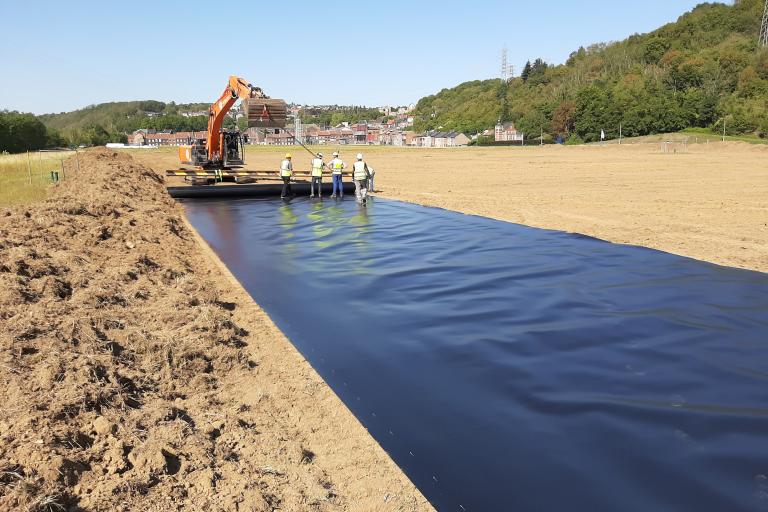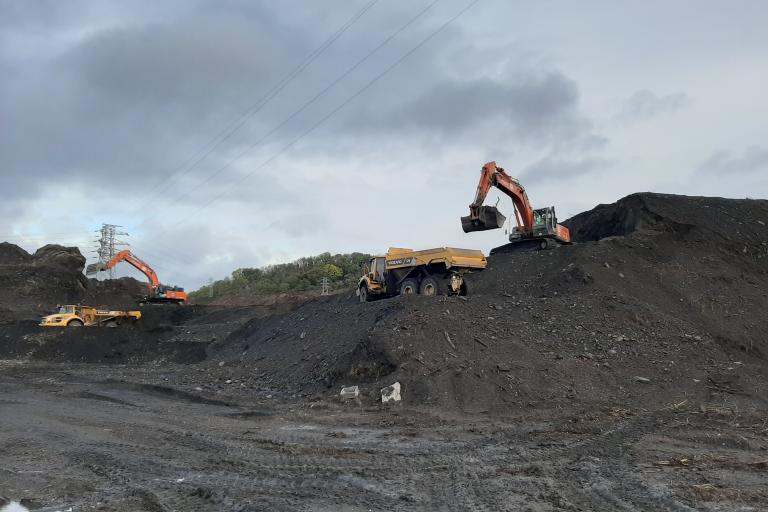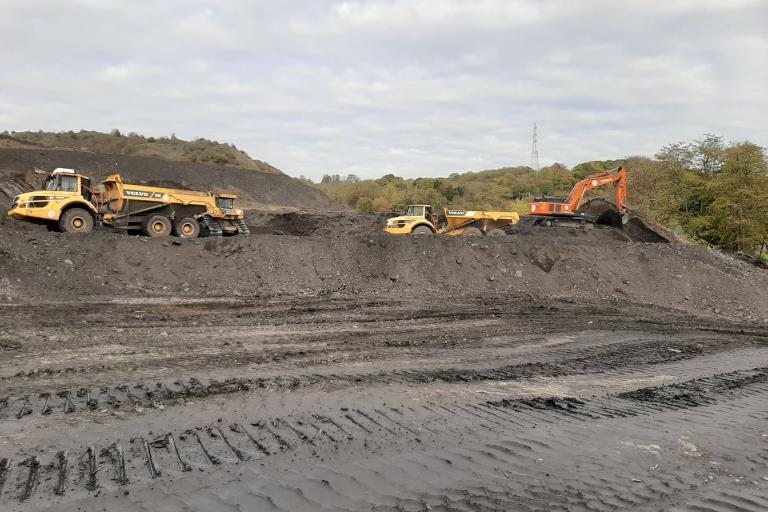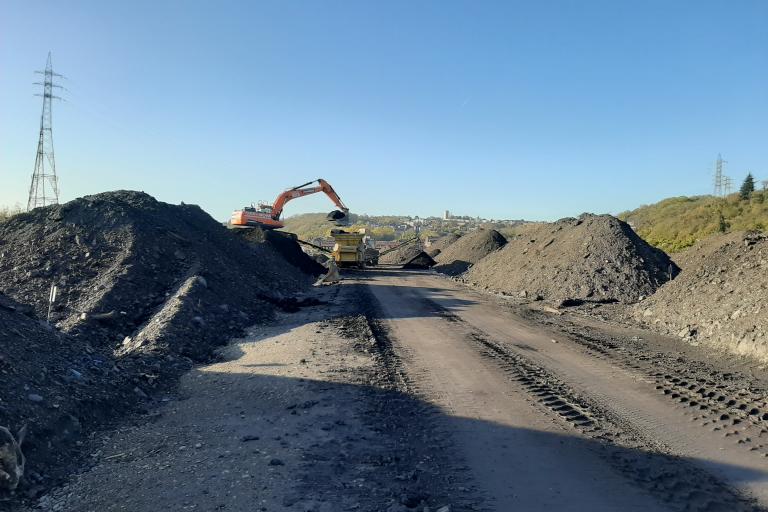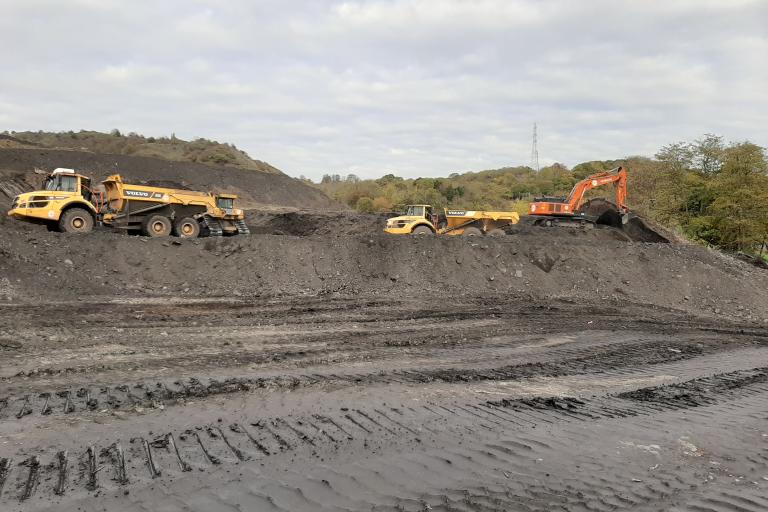The history of this ‘slag heap’ goes back to the beginning of the 20th century.
Originally, waste from "Charbonnages du Bois d'Avroy” coal mine was dumped on the site. As from the 1940s till the early 1980s, the site was used to store waste from Cockerill’s iron and steel activities, as well as material from the demolition of factories and various construction projects. The site was cleared in 2017 to allow for soil and groundwater investigations. These investigations revealed historical contamination with heavy metals, metalloids, mono- and polycyclic aromatic hydrocarbons, mineral oils, chlorinated solvents, PCBs, phenol and cyanide.
A project for both economic and nature development
Since August 2020, after removing the existing vegetation, we have been rapidly excavating the partially contaminated soil located south of the site. This southern part of the project area will later serve as a mixed business park with a new road connecting the site to the nearby Chimeuse economic zone, which has already been remediated by SPAQUE. We store the excavated soil in a specially built storage area of 40,000 m² and analyse the soil in batches of 500 m³. Depending on the analysis results, about half of the soil is transported off site and reused as secondary building material. The other half is reused on site and moved to the north of the area to reshape the old mine slag heap into a future green area. We are responsible for the final re-profiling of the slag heap. In order to make the northern part more attractive as a green space, ponds for amphibians will also be created.

